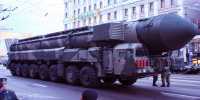Researchers Created innovative Rocket-Propulsion System
Researchers created an innovative modern rocket propulsion system that was once considered to be unlikely. The University of Central Florida researcher and his colleagues have created an innovative modern rocket propulsion system that was once considered to be unlikely. The system known as the revolving detonation rocket engine would allow upper-level rockets for space missions to become lighter, fly faster, and burn more cleanly.
The result was published this month in the journal Combustion and Flame.
“The study presents, for the first time experimental evidence of a safe and functioning hydrogen and oxygen propellant detonation in a rotating detonation rocket engine,” said Kareem Ahmed, UCF Assistant Professor at the Department of Mechanical and Aerospace Engineering, who led the analysis.
The University of Central Florida researcher and his colleagues have created an innovative modern rocket propulsion system that was once considered to be unlikely. These research results already are having repercussions across the international research community.
The spinning detonations are constant, the Mach 5 explosions spin around the interior of the rocket motor, and the explosions are sustained by the delivery of hydrogen and oxygen to the system in just the right concentrations. This device increases rocket-engine performance such that more power is produced by using less fuel than conventional rocket energy, thereby lightening the load of the rocket and reducing its costs and emissions.
Mach 5 blasts produce bursts of energy that fly between 4,500 and 5,600 miles per hour, which is more than five times the speed of sound. They are part of a long-lasting engine body made of copper and brass. The technology has been studied since the 1960s but has not been popular due to the chemical propellers used or the manner in which they were combined.
Ahmed’s group did so by carefully regulating the rate of the propellers, hydrogen, and oxygen emitted into the engine. “We have to tune the sizes of the jets releasing the propellants to enhance the mixing for a local hydrogen-oxygen mixture,” Ahmed said. “So when the rotating explosion comes by for this fresh mixture, it’s still sustained. Because if you have your composition mixture slightly off, it will tend to deflagrate, or burn slowly instead of detonating.”
Ahmed’s team also had to capture evidence of their findings. They achieved this by inserting a tracer into the hydrogen fuel flow and quantifying the detonation waves with a high-speed video. “You need the tracer to actually see that explosion that is happening inside and track its motion,” he said. “Developing this method to characterize the detonation wave dynamics is another contribution of this article.”
William Hargus, director of the Spinning Detonation Rocket Engine Program of the Air Force Research Laboratory, is a co-author of the report and started collaborating with Ahmed on the survey last summer. “As an advanced propulsion spectroscopist, I recognized some of the unique challenges in the observation of hydrogen-detonation structures,” Hargus said. “After consulting with Professor Ahmed, we were able to formulate a slightly modified experimental apparatus that significantly increased the relevant signal strength.”
“These research results already are having repercussions across the international research community,” Hargus said. “Several projects are now re-examining hydrogen detonation combustion within rotating detonation rocket engines because of these results. I am very proud to be associated with this high-quality research.”















